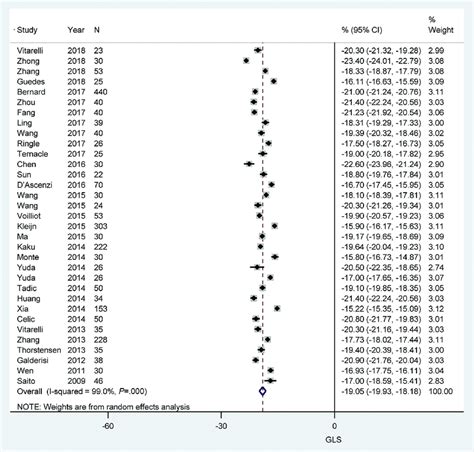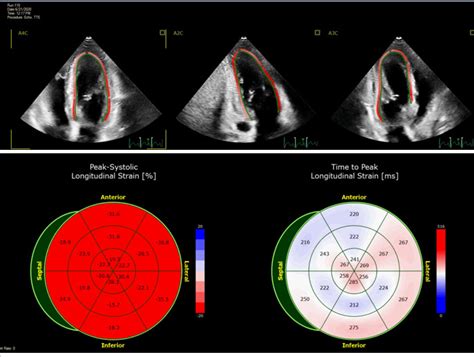lv global strain normal values | global longitudinal peak systolic strain lv global strain normal values The normal GLS was 21.0 percent, but varied significantly with age. GLS was significantly lower in participants >60 years (20.0 percent) vs. those <60 years (21.0 percent; . Par kuru partiju plāno balsot Saeimas vēlēšanās (vai balsotu, ja būtu pilngadīgs/a)? Attīstībai/Par
0 · normal Lv strain echo values
1 · gls normal range chart
2 · global peak longitudinal strain echo
3 · global longitudinal strain measurement
4 · global longitudinal strain chart
5 · global longitudinal peak systolic strain
6 · abnormal longitudinal strain on echo
7 · Lv global longitudinal strain meaning
This table attempts to stay up to date with the current version of Global MapleStory. Contents. 1 Leveling EXP. 1.1 EXP Chart History. 1.2 Beginner. 1.3 First Job. 1.4 Second Job. 1.5 Third Job. 1.6 Fourth Job. 1.7 Fourth Job (Hyper Skills) 1.8 Fifth Job. 1.9 Sixth Job. 1.10 Growth Potions. 2 Pet Closeness. 3 Traits EXP. Leveling EXP[ edit]
Global radial strain ranged from 35.1% to 59.0% (mean, 47.3%; 95% CI, 43.6% to 51.0%). There was significant between-study heterogeneity and inconsistency. The source of variation was .Normal values for LV chamber dimensions (linear), volumes and ejection fraction vary by gender. A normal ejection fraction is 53-73% (52-72% for men, 54-74% for women). Refer to Table 2 . The normal GLS was 21.0 percent, but varied significantly with age. GLS was significantly lower in participants >60 years (20.0 percent) vs. those <60 years (21.0 percent; .The reference ranges for left ventricular (LV) global longitudinal strain and right ventricular free-wall strain were −24% to −16% and −35% to −17%, respectively. Correspondingly, left atrial .
Regardless of vendor or clinical covariate, a GLS <16% likely indicates significant myocardial dysfunction. This is the first study to reliably define GLS variance in a normal population and .A, Baseline echocardiogram shows normal left ventricular strain (2-dimensional global longitudinal strain). B, Reduced global longitudinal strain with a nonspecific pattern, consistent with trastuzumab-induced cardiomyopathy.Global longitudinal strain (GLS) has emerged as a fine-tuned, highly reproducible, and operator-friendly method for quantification of left ventricular function and prognostication in a wide .Results: The search identified 2,597 subjects from 24 studies. Reported normal values of GLS varied from 15.9% to 22.1% (mean, 19.7%; 95% CI, 20.4% to 18.9%). Normal global .
This review article focuses on the practical aspects of measuring LV global longitudinal strain (GLS), reviews the clinical implications of impaired LV GLS strain and provides a glimpse into the future clinical applications of this . Because GLS normally varies with age, sex, and LV loading conditions, defining abnormal GLS is not straightforward. However, in adults, GLS 16% ( sic ) is abnormal, GLS >18% ( sic ) is normal, and GLS 16% to 18% is borderline.Global radial strain ranged from 35.1% to 59.0% (mean, 47.3%; 95% CI, 43.6% to 51.0%). There was significant between-study heterogeneity and inconsistency. The source of variation was sought between studies using meta-regression.
Normal values for LV chamber dimensions (linear), volumes and ejection fraction vary by gender. A normal ejection fraction is 53-73% (52-72% for men, 54-74% for women). Refer to Table 2 (normal values for non-contrast images) and Table 4 (recommendations for the normal The normal GLS was 21.0 percent, but varied significantly with age. GLS was significantly lower in participants >60 years (20.0 percent) vs. those <60 years (21.0 percent; p< 0.01). A GLS <16.0 percent was observed in 66 (2.8 percent) participants, with a .The reference ranges for left ventricular (LV) global longitudinal strain and right ventricular free-wall strain were −24% to −16% and −35% to −17%, respectively. Correspondingly, left atrial (LA) and right atrial (RA) reservoir strains were 17% to 49% and 17% to 59%.
Regardless of vendor or clinical covariate, a GLS <16% likely indicates significant myocardial dysfunction. This is the first study to reliably define GLS variance in a normal population and may now support the routine use of GLS as a clinical decision-making tool.A, Baseline echocardiogram shows normal left ventricular strain (2-dimensional global longitudinal strain). B, Reduced global longitudinal strain with a nonspecific pattern, consistent with trastuzumab-induced cardiomyopathy.Global longitudinal strain (GLS) has emerged as a fine-tuned, highly reproducible, and operator-friendly method for quantification of left ventricular function and prognostication in a wide spectrum of cardiac diseases (3).Results: The search identified 2,597 subjects from 24 studies. Reported normal values of GLS varied from 15.9% to 22.1% (mean, 19.7%; 95% CI, 20.4% to 18.9%). Normal global circumferential strain varied from 20.9% to 27.8% (mean, 23.3%; 95% CI, 24.6% to 22.1%).

normal Lv strain echo values
This review article focuses on the practical aspects of measuring LV global longitudinal strain (GLS), reviews the clinical implications of impaired LV GLS strain and provides a glimpse into the future clinical applications of this technology. Because GLS normally varies with age, sex, and LV loading conditions, defining abnormal GLS is not straightforward. However, in adults, GLS 16% ( sic ) is abnormal, GLS >18% ( sic ) is normal, and GLS 16% to 18% is borderline.Global radial strain ranged from 35.1% to 59.0% (mean, 47.3%; 95% CI, 43.6% to 51.0%). There was significant between-study heterogeneity and inconsistency. The source of variation was sought between studies using meta-regression.Normal values for LV chamber dimensions (linear), volumes and ejection fraction vary by gender. A normal ejection fraction is 53-73% (52-72% for men, 54-74% for women). Refer to Table 2 (normal values for non-contrast images) and Table 4 (recommendations for the normal
The normal GLS was 21.0 percent, but varied significantly with age. GLS was significantly lower in participants >60 years (20.0 percent) vs. those <60 years (21.0 percent; p< 0.01). A GLS <16.0 percent was observed in 66 (2.8 percent) participants, with a .
The reference ranges for left ventricular (LV) global longitudinal strain and right ventricular free-wall strain were −24% to −16% and −35% to −17%, respectively. Correspondingly, left atrial (LA) and right atrial (RA) reservoir strains were 17% to 49% and 17% to 59%.
Regardless of vendor or clinical covariate, a GLS <16% likely indicates significant myocardial dysfunction. This is the first study to reliably define GLS variance in a normal population and may now support the routine use of GLS as a clinical decision-making tool.A, Baseline echocardiogram shows normal left ventricular strain (2-dimensional global longitudinal strain). B, Reduced global longitudinal strain with a nonspecific pattern, consistent with trastuzumab-induced cardiomyopathy.
Global longitudinal strain (GLS) has emerged as a fine-tuned, highly reproducible, and operator-friendly method for quantification of left ventricular function and prognostication in a wide spectrum of cardiac diseases (3).Results: The search identified 2,597 subjects from 24 studies. Reported normal values of GLS varied from 15.9% to 22.1% (mean, 19.7%; 95% CI, 20.4% to 18.9%). Normal global circumferential strain varied from 20.9% to 27.8% (mean, 23.3%; 95% CI, 24.6% to 22.1%).


rolex vintage watch service

gls normal range chart
Excision @ circuitGROUNDS, EDC Las Vegas, United States 2023-05-21. Tracklist Media Links. Mix with DJ.Studio. Player 1 [2:09:25] Player 2 [24:22] MY 3rd VLOG | EDC LAS VEGAS 2023 | DAY 3. Watch on. 01. Excision & Sullivan King - ID. 1 Turret (5.3k) 02. Excision & Space Laces - 1 On 1 (SOUL VALIENT & SCAREXX Remix) .
lv global strain normal values|global longitudinal peak systolic strain


























